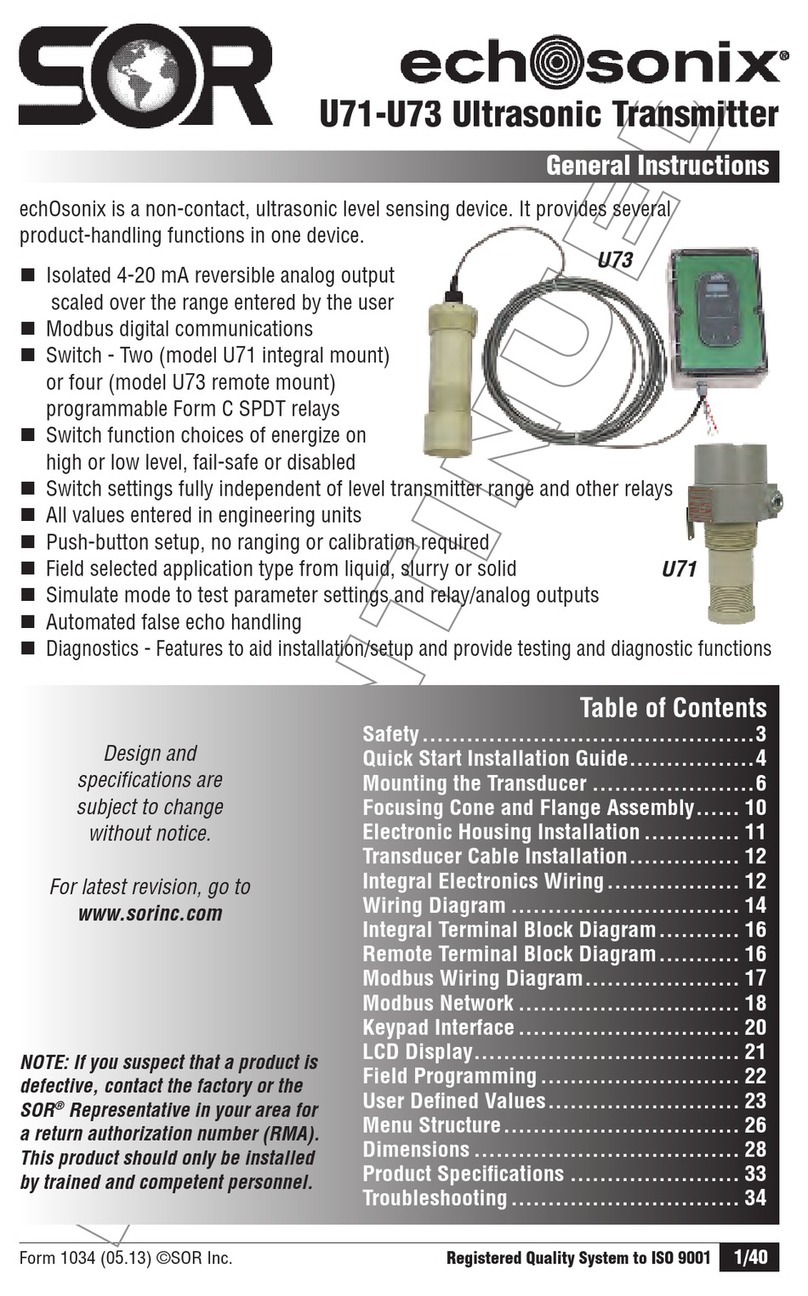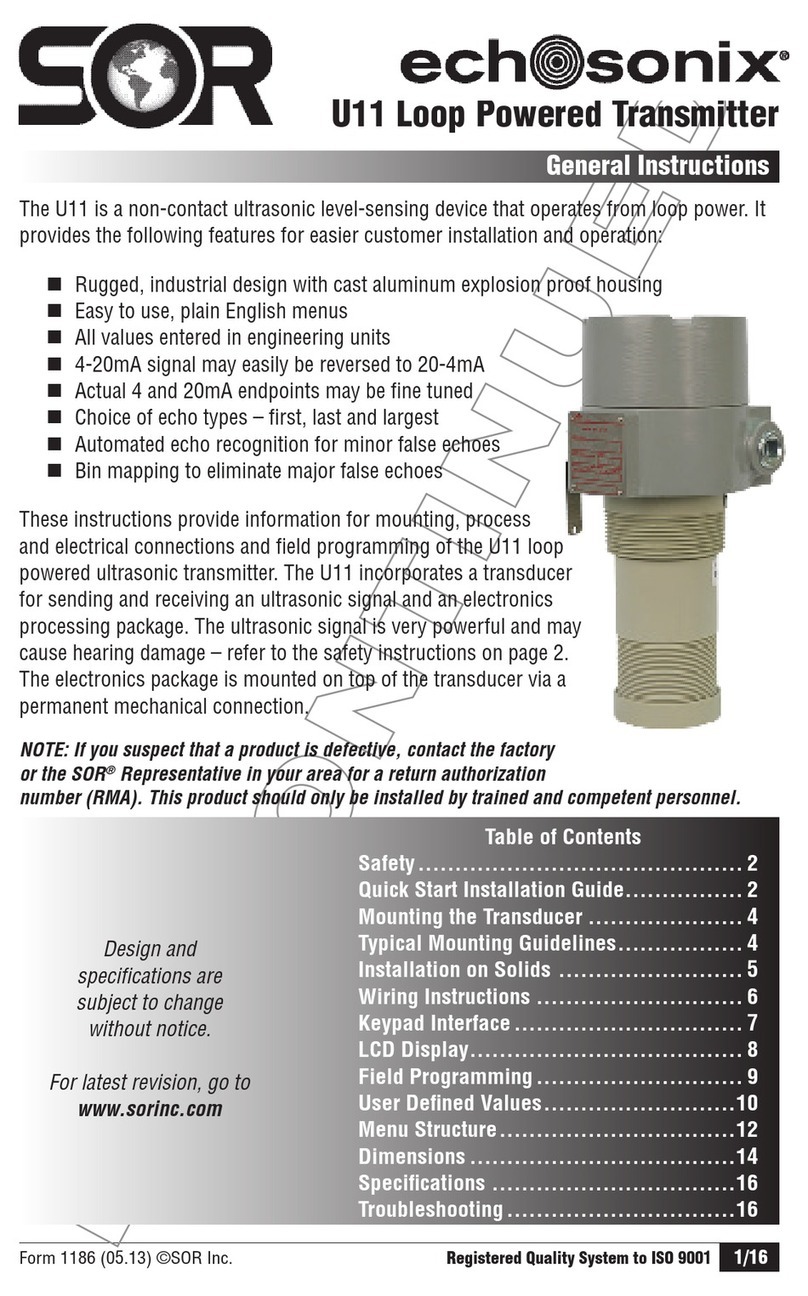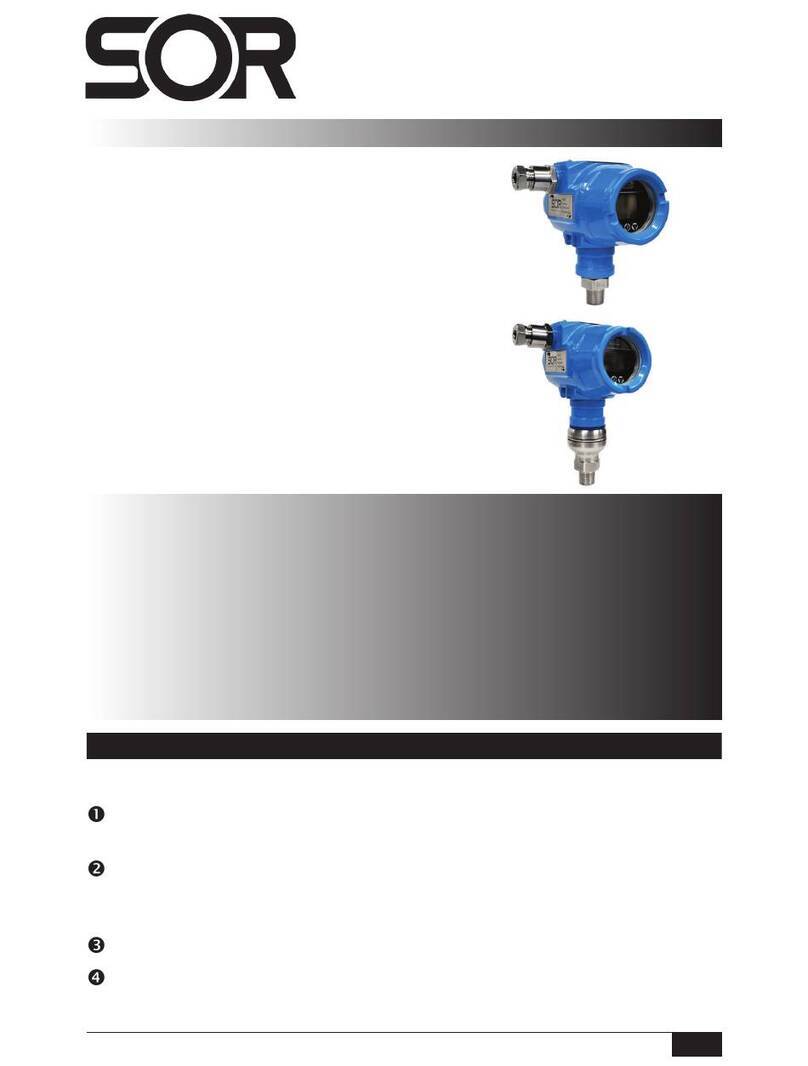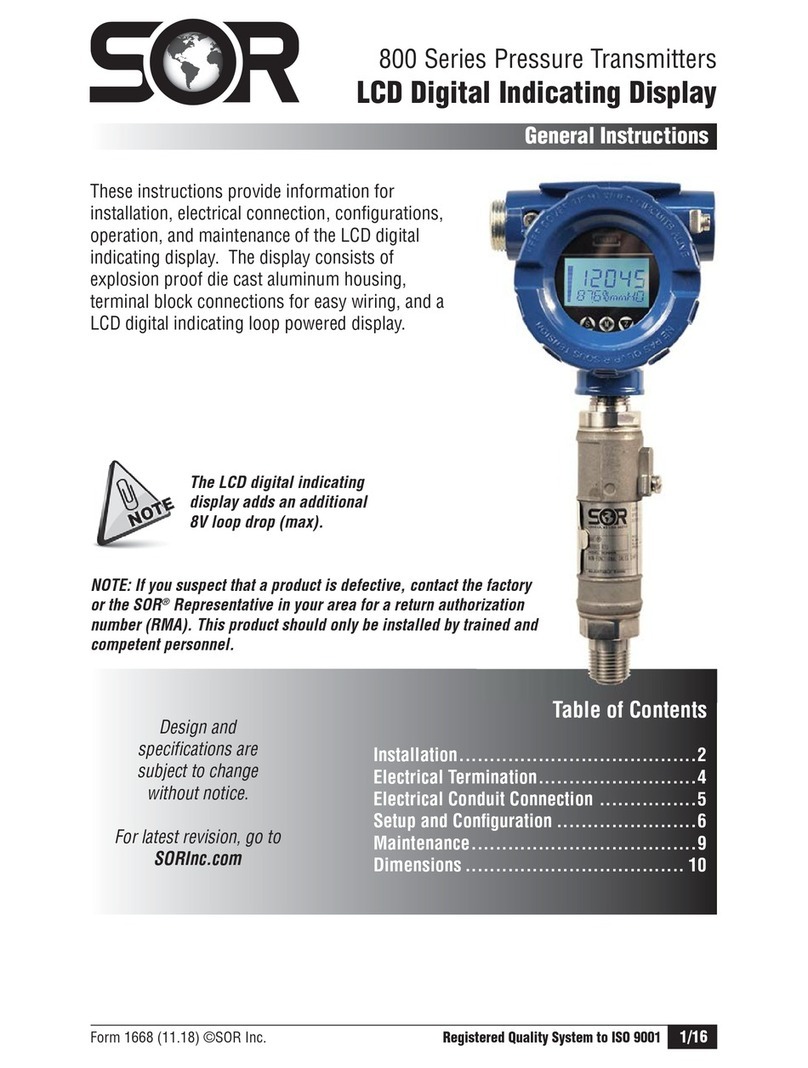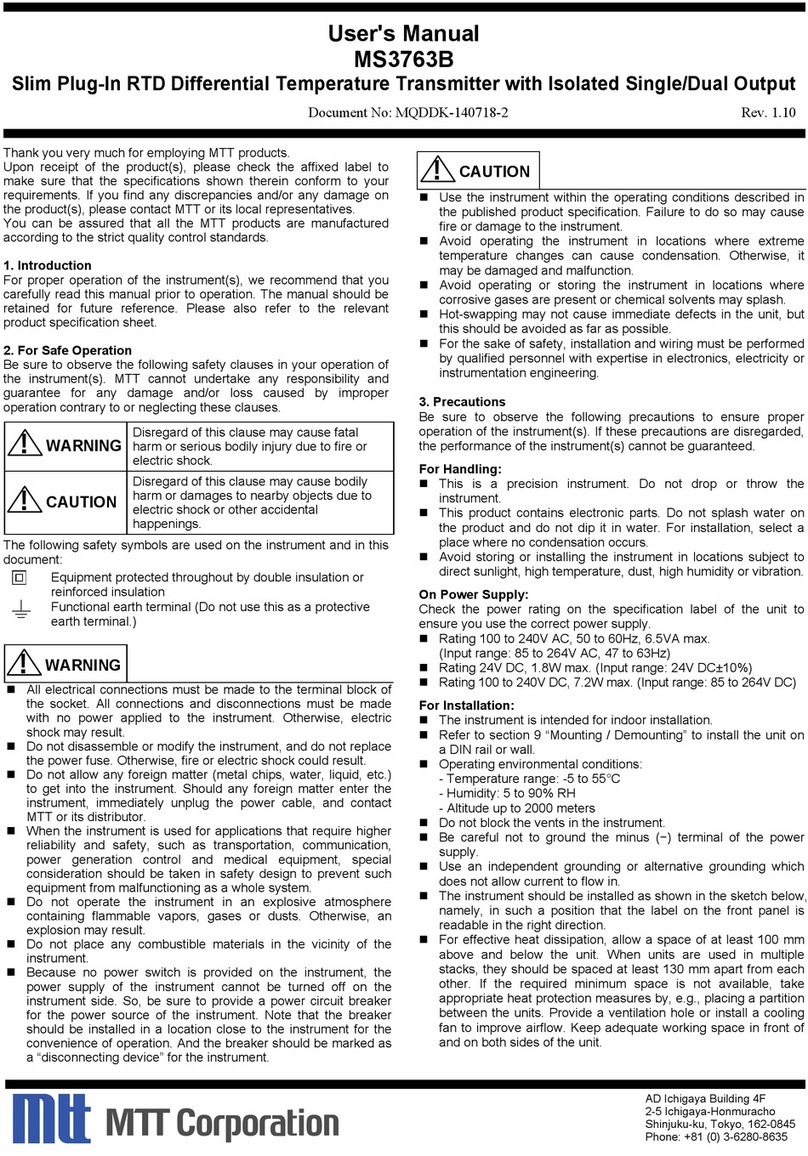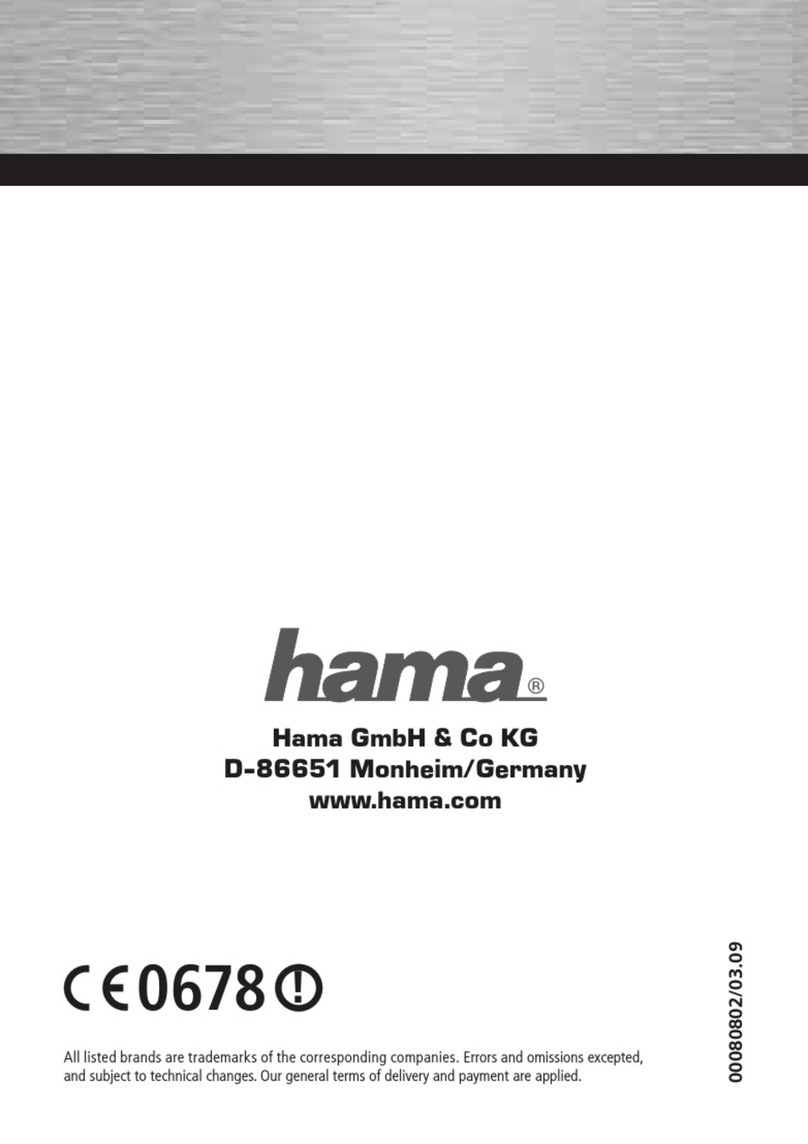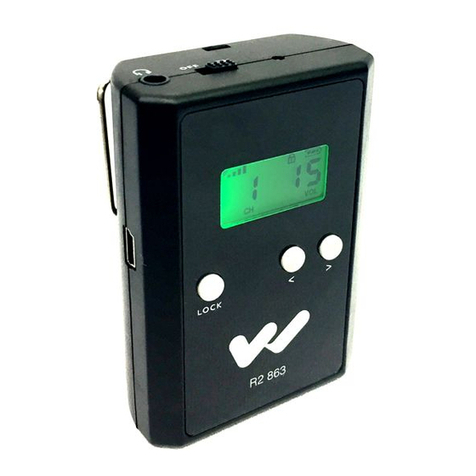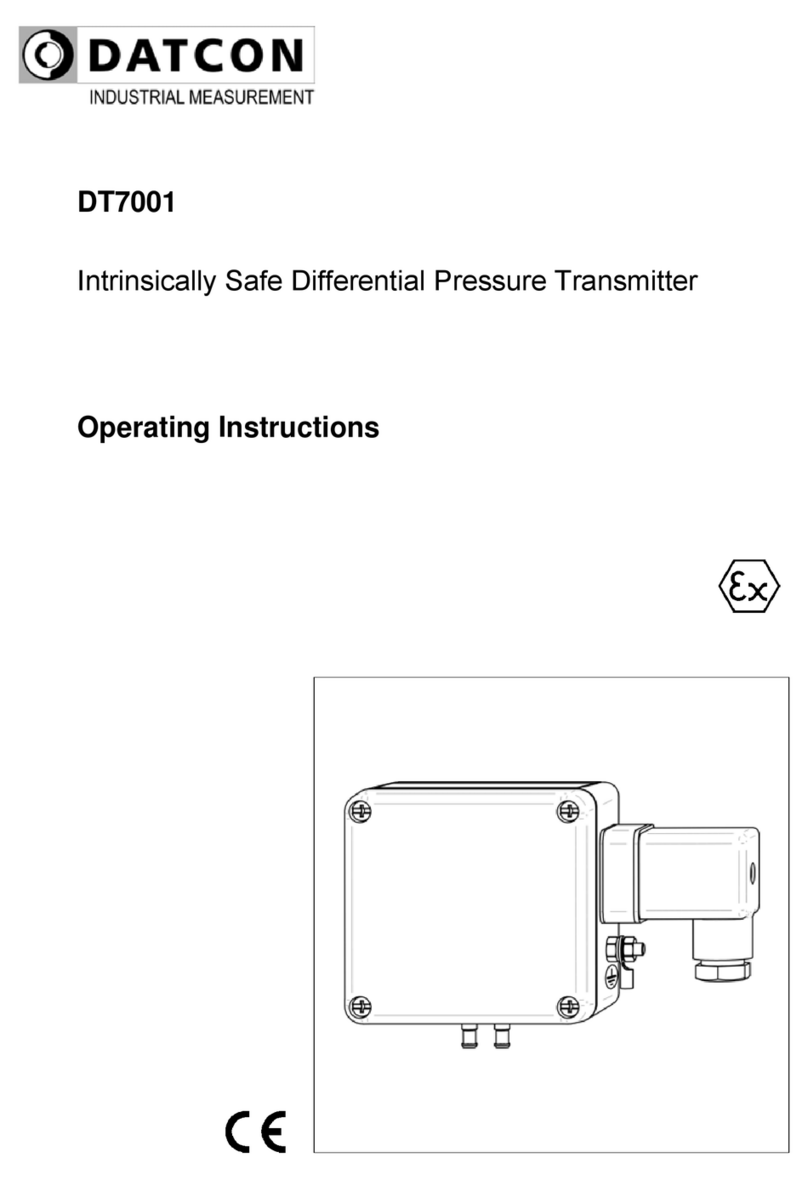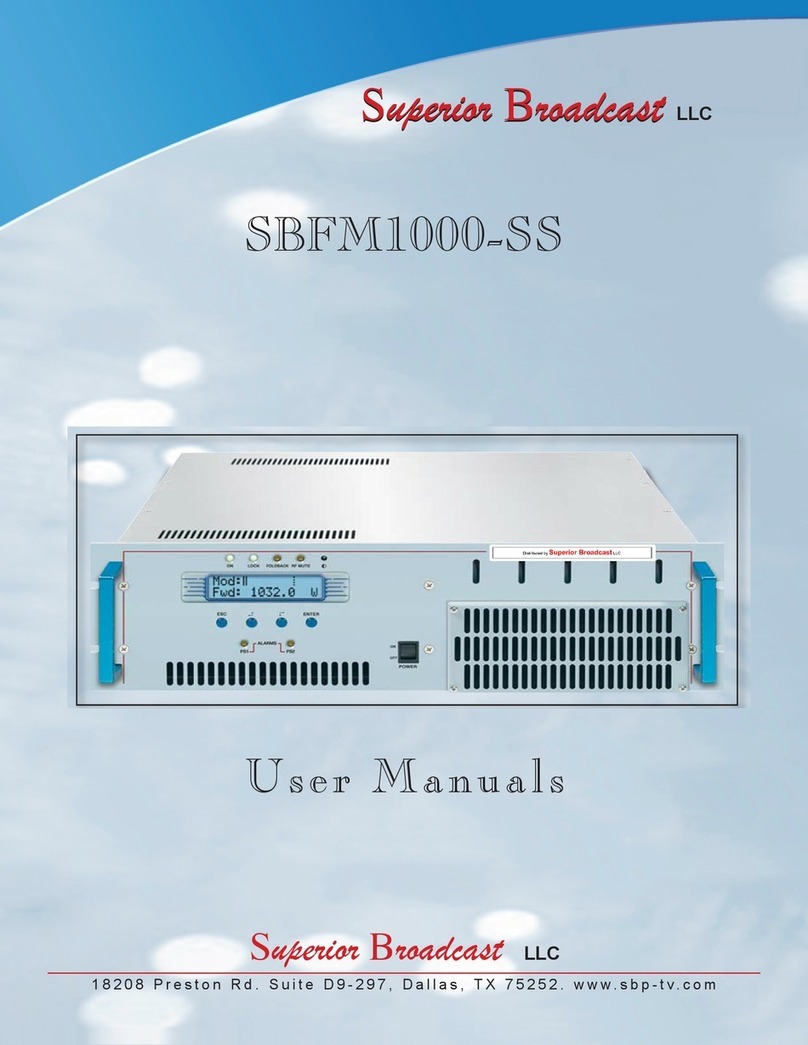SOR 510 Series User manual

Form 948 (10.09) ©2009 SOR Inc.
1/8
The Series 510 Submersible Level Transmitters are solid state
instruments designed for direct submergence into many types
of liquid for quick, accurate and reliable level measurement.
The transmitter indicates the level of the liquid by continuously
measuring hydrostatic head pressure using a high performance
ceramic sensor. Electrical connection is made via a 20 gauge
shielded waterproof cable which is vented at the surface to
reference atmospheric pressure.
Once the transmitter is installed and wired into a control or
display loop, it is ready for use. Before applying power, check
that the supply polarity and excitation voltage is correct.
Series 510
Submersible Level Transmitters
General Instructions
Do not twist the wires during installation or servicing
the instrument as it may break the integrity of the
seal between the wires and the transmitter. Failure of
this nature is not covered by warranty.
Registered Quality System to ISO 9001:2008
NOTE: If you suspect that a product is defective, contact the factory or the
SOR®Representative in your area for a return authorization number (RMA).
This product should only be installed by trained and competent personnel.
e
M
A)
.
el
.
Design and
specifications are
subject to change
without notice.
For latest revision, go to
www.sorinc.com
Table of Contents
Calibration .......................................2
Installation.......................................3
Wiring Details ...................................4
Servicing .........................................5
Fault Conditions.................................5
Typical Fixed Range Installations ............6

2/8
Form 948 (10.09) ©2009 SOR Inc.
Linear = mm/inches
Dimensions are for reference only.
Contact the factory
for certified drawings
for a particular model number.
Calibration
The transmitter is supplied factory calibrated and during normal use should not require
recalibration. If it is desired to verify calibration prior to installation of Series 510LT,
remove the nose cone and attach to a pressure source capable of adjustment
throughout specified range. If outputs are not within limits at factory calibration
conditions, 77°F (25°C), the device should be returned to the factory.
Units in hazardous locations - prior to removal from service, make sure
that the work area is declassied.m Failure to do so could result in severe
personal injury or substantial property damage.
Drawing 0091085
Drawing 0091268

Form 948 (10.09) ©2009 SOR Inc.
3/8
The Series 510 is designed to be self-supporting in any plane when rigidly mounted by the
pressure port (1/4” NPT process connection) under the removable nose cone. For rigid
installation, thread the transmitter in place using the wrench flats provided.
Both models are designed to be supported by the shielded electrical cable when suspension
mounted. A stainless steel strain wire is incorporated in the cable for attachment to a rigid
structure. If a rigid structure is not available, the SOR cable clamp accessory (P/N 9137-104,
ordered separately) provides a means for suspension without damaging the cable.
When mounting the transmitter, care must be taken to prevent the cable bending through a radius
smaller than 2 inches. Failure to observe this precaution may result in damage to the cable internal
vent tube. This may give incorrect readings from the transmitter. Care must be taken to prevent
water entering or foreign objects blocking the vent tube, either of which may result in a fault
condition. Faults of this nature are not covered by the warranty.
Avoid mounting the transmitter near a heat source which is liable to overheat the instrument
or cause a temperature gradient across it. If this is unavoidable, introduce a heat shield to deflect
radiated heat and thus maintain the transmitter at a uniform temperature within the specified limits.
Although the operating temperature of the transmitter extends to below 32°F, fluids must not be
allowed to freeze in the pressure port. Failure will occur due to the expansion of the frozen fluid in
the contained volume of the pressure port causing gross overpressurization. A failure of this nature
is not covered by warranty.
The transmitter should not be used as a step!
SOR 510 submersible products should not be used in liquids known to have
or possibly contain chemical compounds that react with butyl rubber or
stainless steel.
Installation
Before installing the transmitter, verify that the range stated on the transmitter label is
suitable for the level (pressure) to be measured.

4/8
Form 948 (10.09) ©2009 SOR Inc.
Wiring Details
Ensure that wiring conforms to all applicable local and national electrical codes and install
unit(s) according to relevant national and local safety codes.
The Series 510 transmitter is designed to operate in a 2 wire, 4-20 mA system. A system
of this type requires that the measuring instrument alter the current consumption of an
electrical circuit in proportion to level (pressure) changes. The changes in current may
be measured using suitable instruments. Due to the design of the transmitter, it is un-
able to produce currents less than approximately 3.3 mA. Should the transmitter output
be “locked” at a figure of this order, it is indicative of a fault and the system should be
checked immediately.
Schematic diagrams for incorporation of the transmitter into a control or display loop are
shown here. The supply voltage at the transmitter terminals must be between 10 and 32 VDC
(IS option 28 VDC max). Polarity of the transmitter wiring is essential for proper operation.
The transmitter will drive into a resistive load,
which is a function of the supply voltage.
This may be derived from the following formula:
R
L
(Max) = V
Supply
- 10V
20mA
Power
Supply
Red Wire
Blue Wire
White Wire Transmitter
Milliammeter
4 - 20 mA
Case Ground
Power
Supply
Red Wire
Blue Wire
White Wire Transmitter
Case Ground
To Display or
other Process Instruments
Resistive
load
Current Loop
-
-
As noted earlier, the minimum
current the transmitter can
supply is in the order of 3.3
mA. If a reading of this
nature is obtained, it is usually
indicative of a fault condition,
possibly due to damage to the
transmitter caused by overpres-
surization or negative pressure
being applied to the transmitter.
The red wire is the positive
power supply input, the blue
wire is the negative power
supply input and white is case
ground. Reverse connection
will prevent the transmitter
operating due to its internal
reverse polarity protection.

Form 948 (10.09) ©2009 SOR Inc.
5/8
Servicing
This transmitter contains no user serviceable parts and cannot be repaired on site. It must
be returned to the factory. Disassembly of the instrument by unauthorized persons will
invalidate the warranty. If there is a risk of debris accumulating in the pressure port, it
should be very carefully cleaned.
Use of a sharp object such as a screwdriver or a high-pressure spray to clean
the ceramic sensor could cause permanent damage!
Fault Conditions
If a malfunction occurs which is traced to the transmitter, it should be removed for
inspection and test. If the transmitter has been subjected to excess pressure, vibration,
shock or extreme supply voltage (as in the case of a lightning strike), damage may be
indicated by a constant output, regardless of the applied pressure. Overpressure may
also cause high or unstable readings.
Blocked pressure ports or pipes may cause a similar symptom and should be rectified
before carrying out further tests. Caution should be used in cleaning the process
connection to prevent permanent damage to the ceramic sensor.
The transmitter can withstand pressure of 150% of its rated range without calibration
change. Pressures above this may cause irreparable damage to the sensor. Frequent
causes of such overpressures are high transient pressures, which may not be easy to
detect during normal operation.

6/8
Form 948 (10.09) ©2009 SOR Inc.
Typical Fixed Tank Installations
GENERAL NOTES:
1. 13mm (0.52”) mounting hole required on right-angle brackets.
2. Secure cable to bulkhead or tank wall using cable clips for 7mm - 8mm (0.28” - 0.32”)
dia. cable. Maximum distance between clips is 500mm (19.69”). Avoid strain on cable.
3. Use bulkhead seals suitable for 7mm - 8mm (0.28” - 0.32”) cable.
4. Terminate vent tube and connect cable within an environmentally protected enclosure.
15.0 MIN
0.59
DO NOT use
transmitter
as a step!
Support cable
on bulkhead
or cable tray.
Sludge Level Maximum
15.0 MIN
0.59
249.9 MIN
9.84
Sludge Level Maximum
Linear = mm/inches
Sludge Level Max.
300 MIN
11.81
35.0 MIN
1.38

Form 948 (10.09) ©2009 SOR Inc.
7/8

8/8
Form 948 (10.09) ©2009 SOR Inc.
14685 West 105th Street, Lenexa, KS 66215
913-888-2630
800-676-6794 USA
Fax 913-888-0767
Registered Quality System to ISO 9001:2008
Printed in USA www.sorinc.com
Table of contents
Other SOR Transmitter manuals
Popular Transmitter manuals by other brands
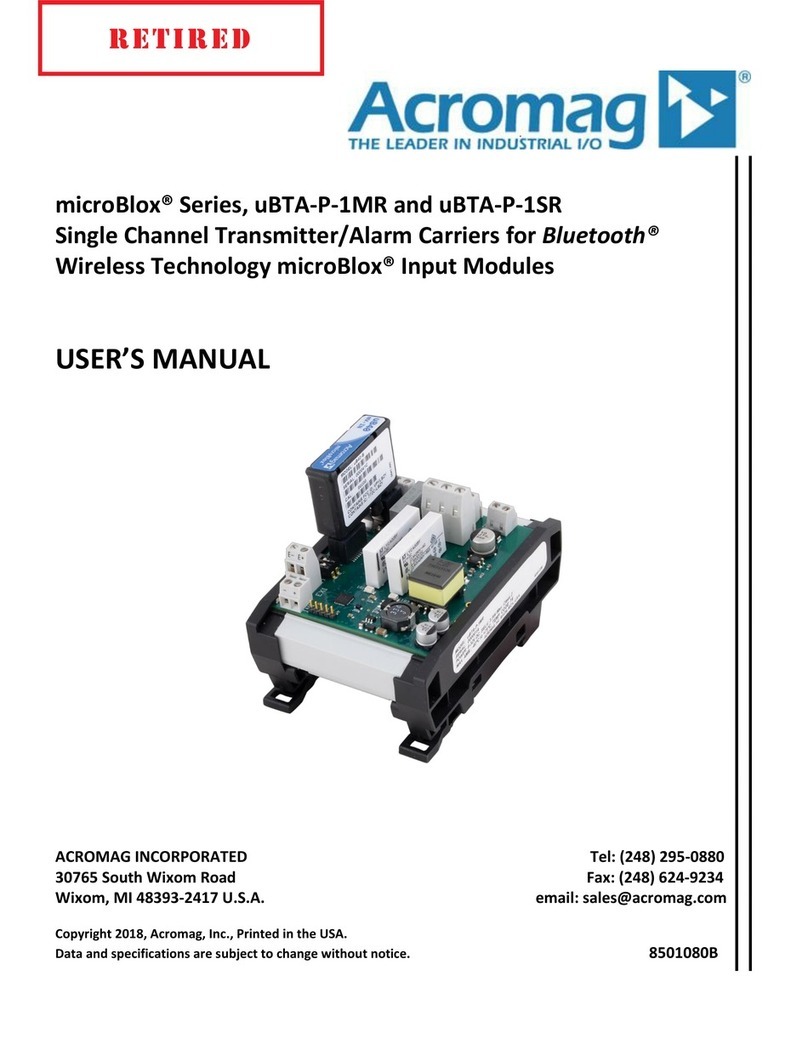
Acromag
Acromag microBlox Series user manual

Movie Vision
Movie Vision MV-TX1 Installation and operation manual

ITB
ITB ATLAS 1000 AR144 Manual for Systems and Procedures
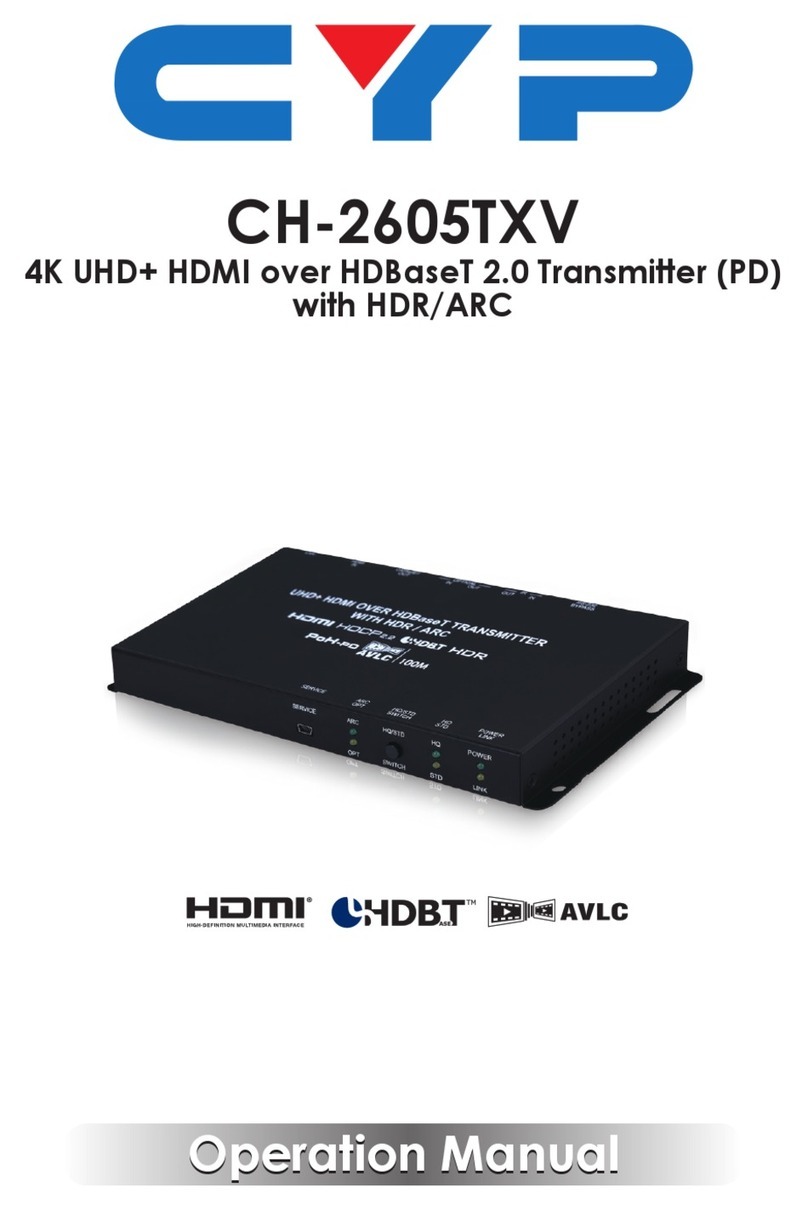
CYP
CYP CH-2605TXV Operation manual
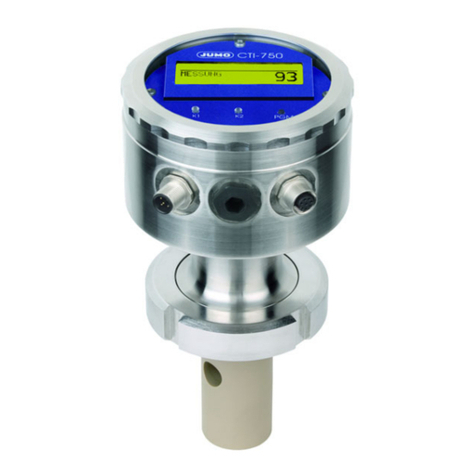
JUMO
JUMO CTI-750 operating manual
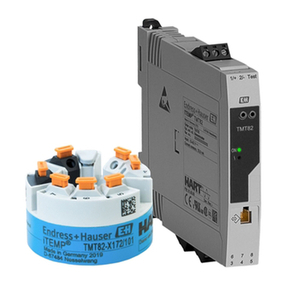
Endress+Hauser
Endress+Hauser iTEMP TMT82 Brief operating instructions
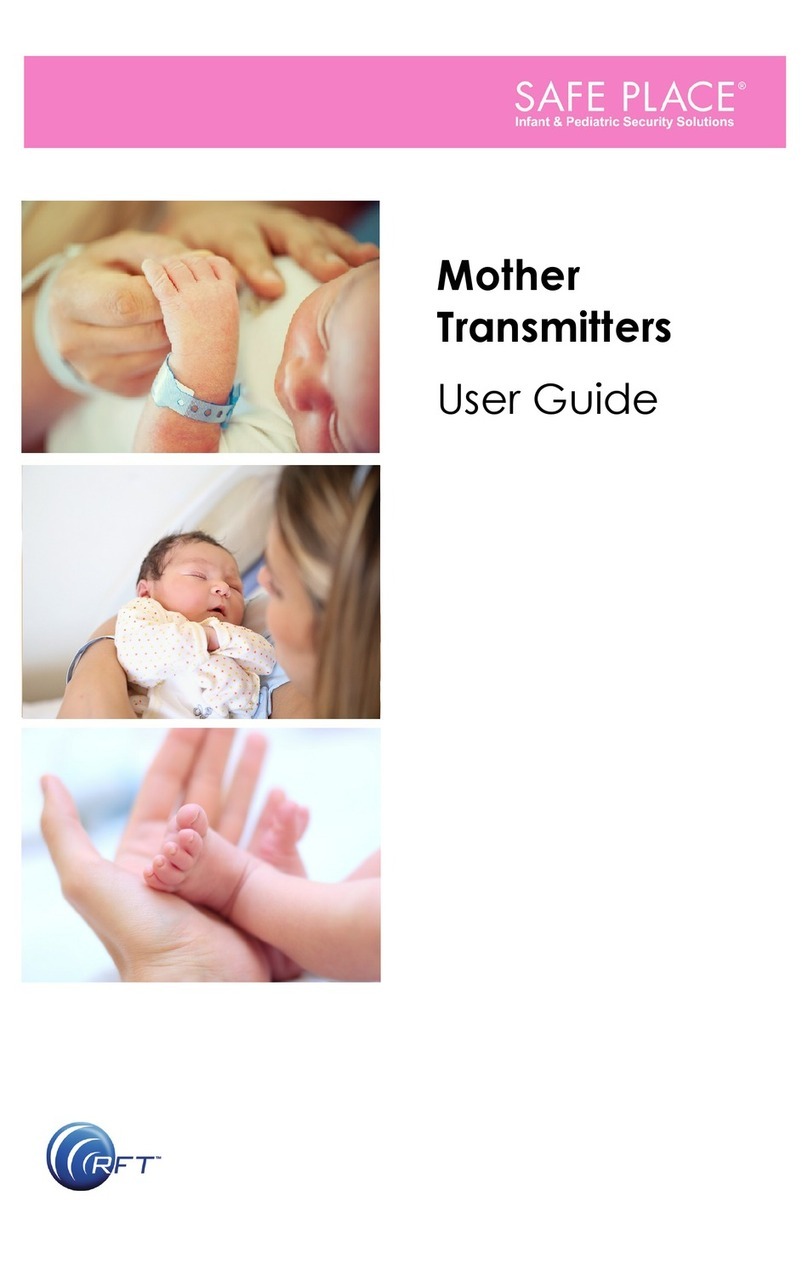
Rf-t
Rf-t Safe Place Mother user guide
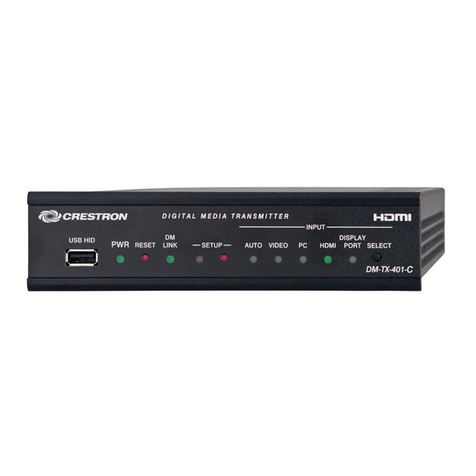
Crestron
Crestron DM-TX-401-C quick start guide

Emerson
Emerson Rosemount 3051S Series quick start guide
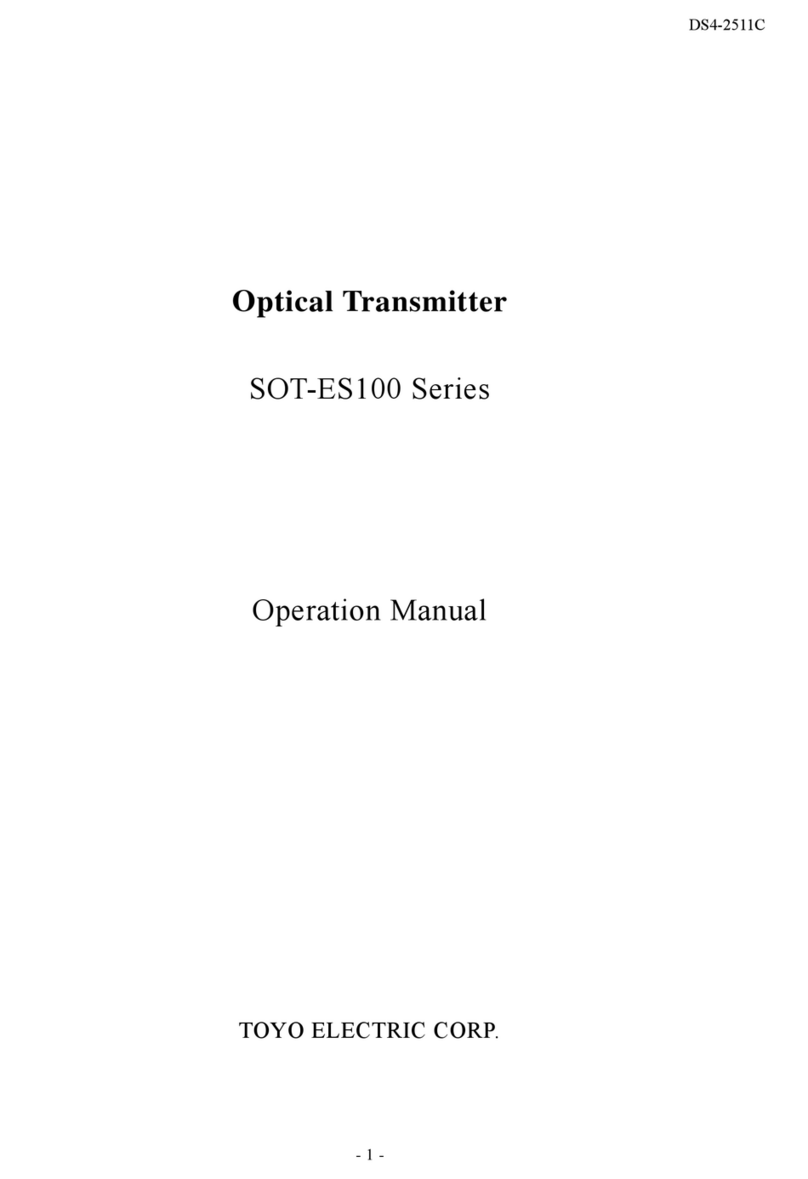
Toyo
Toyo SOT-ES100 Series manual
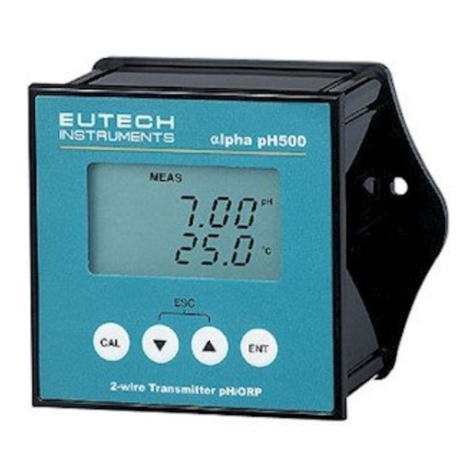
EUTECH INSTRUMENTS
EUTECH INSTRUMENTS ALPHA PH 500 PHORP 2-WIRE TRANSMITTER (REVISION... instruction manual
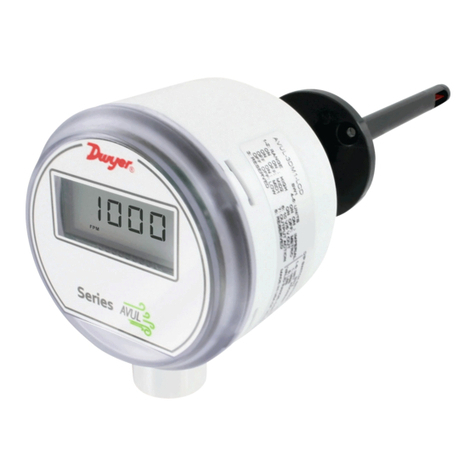
Dwyer Instruments
Dwyer Instruments AVUL Series Installation and operating instructions
